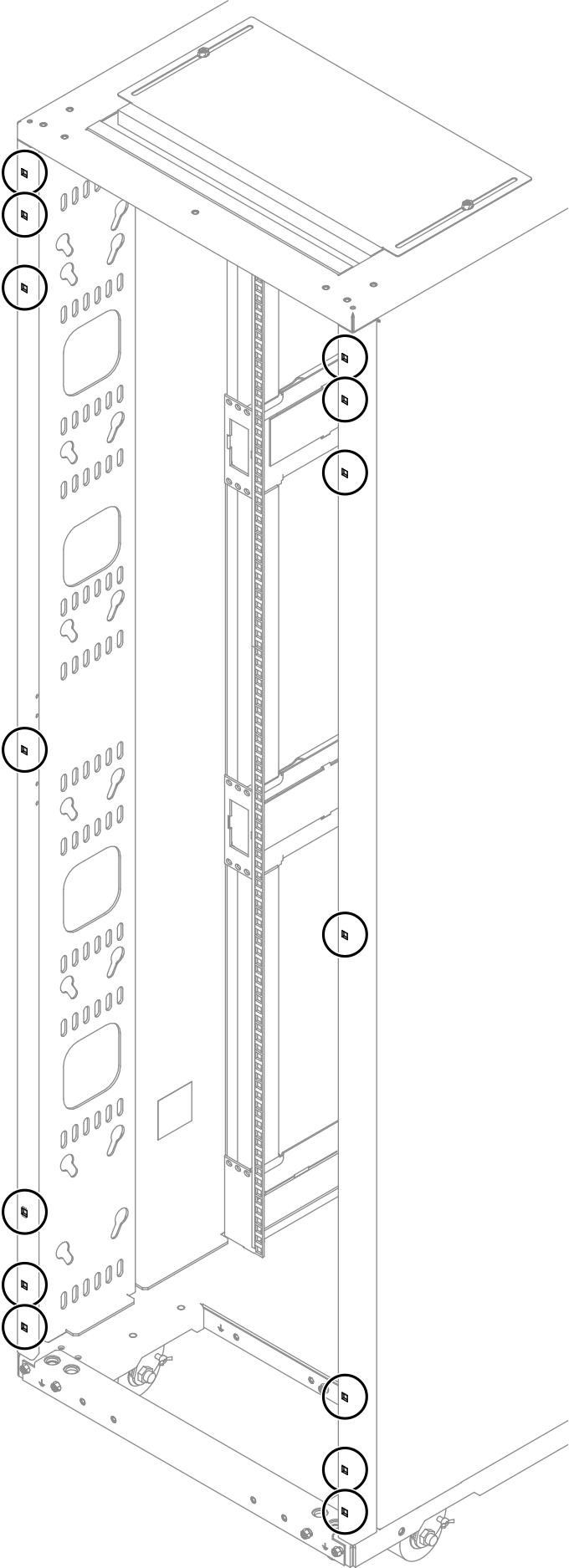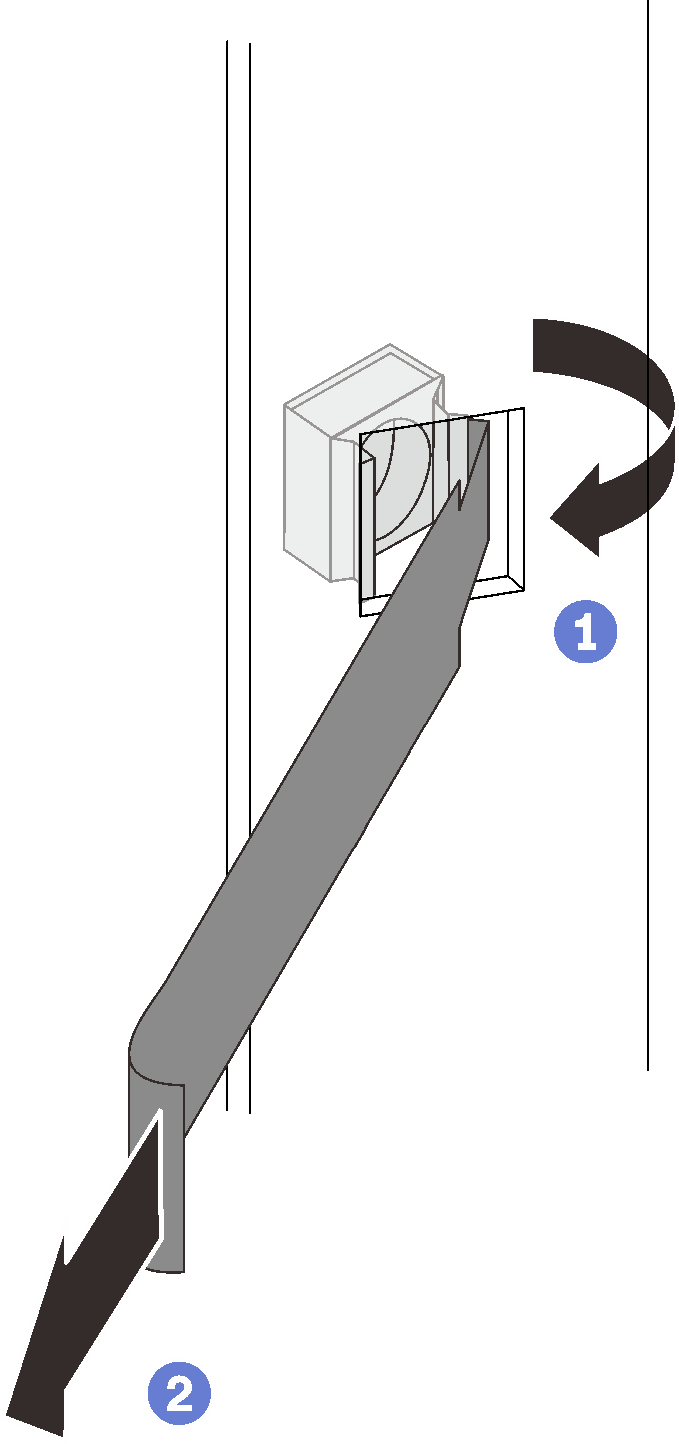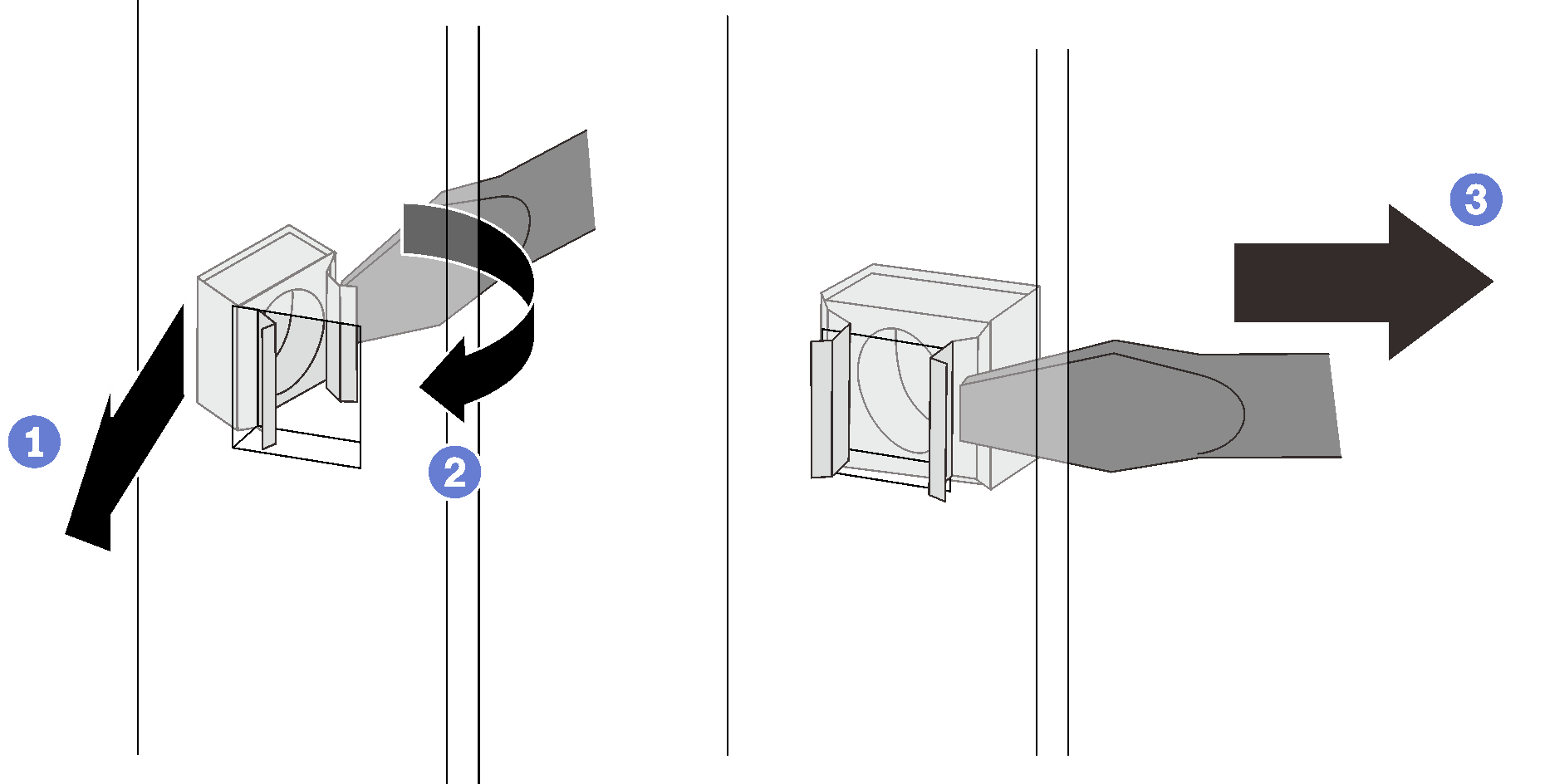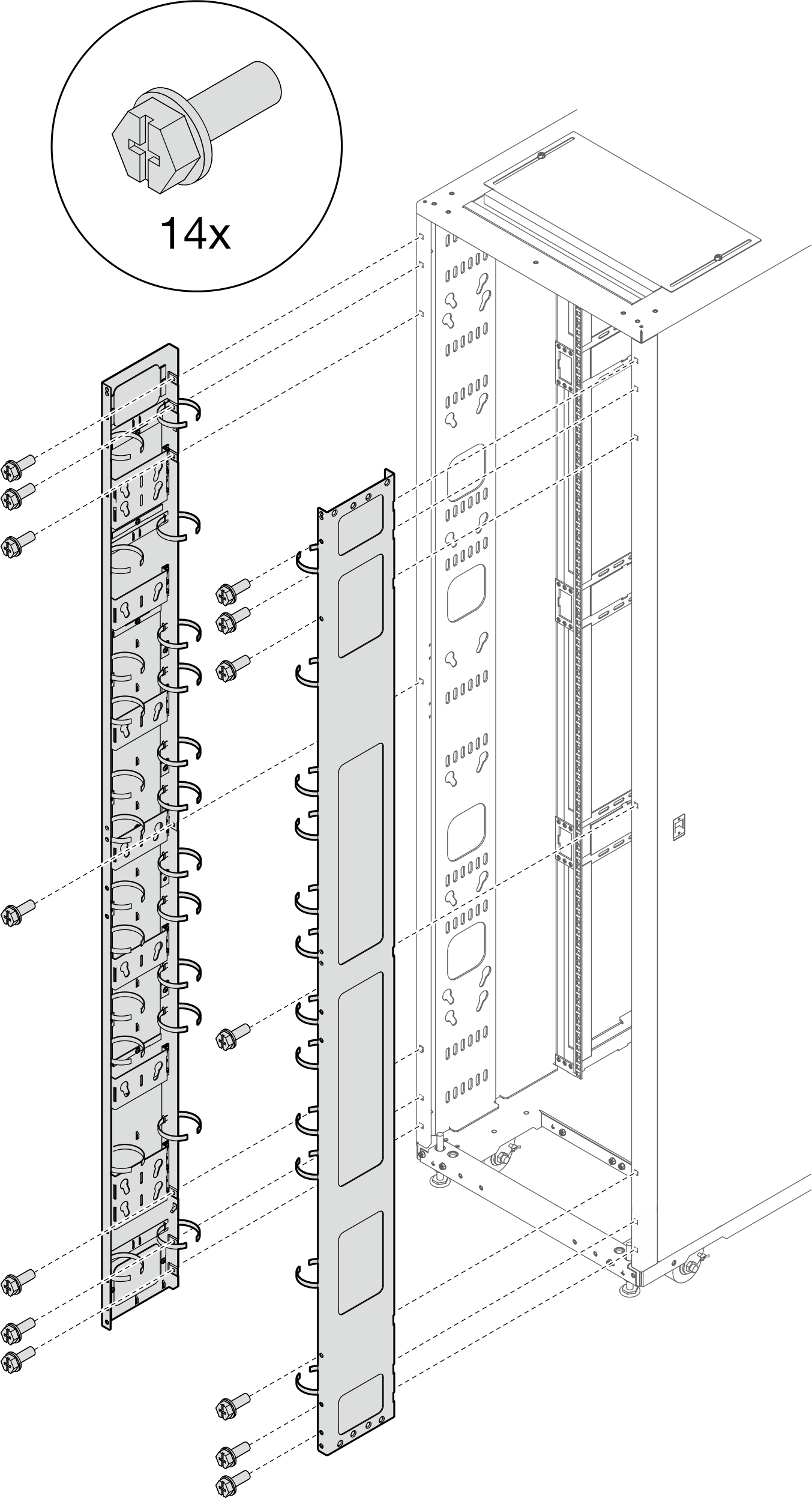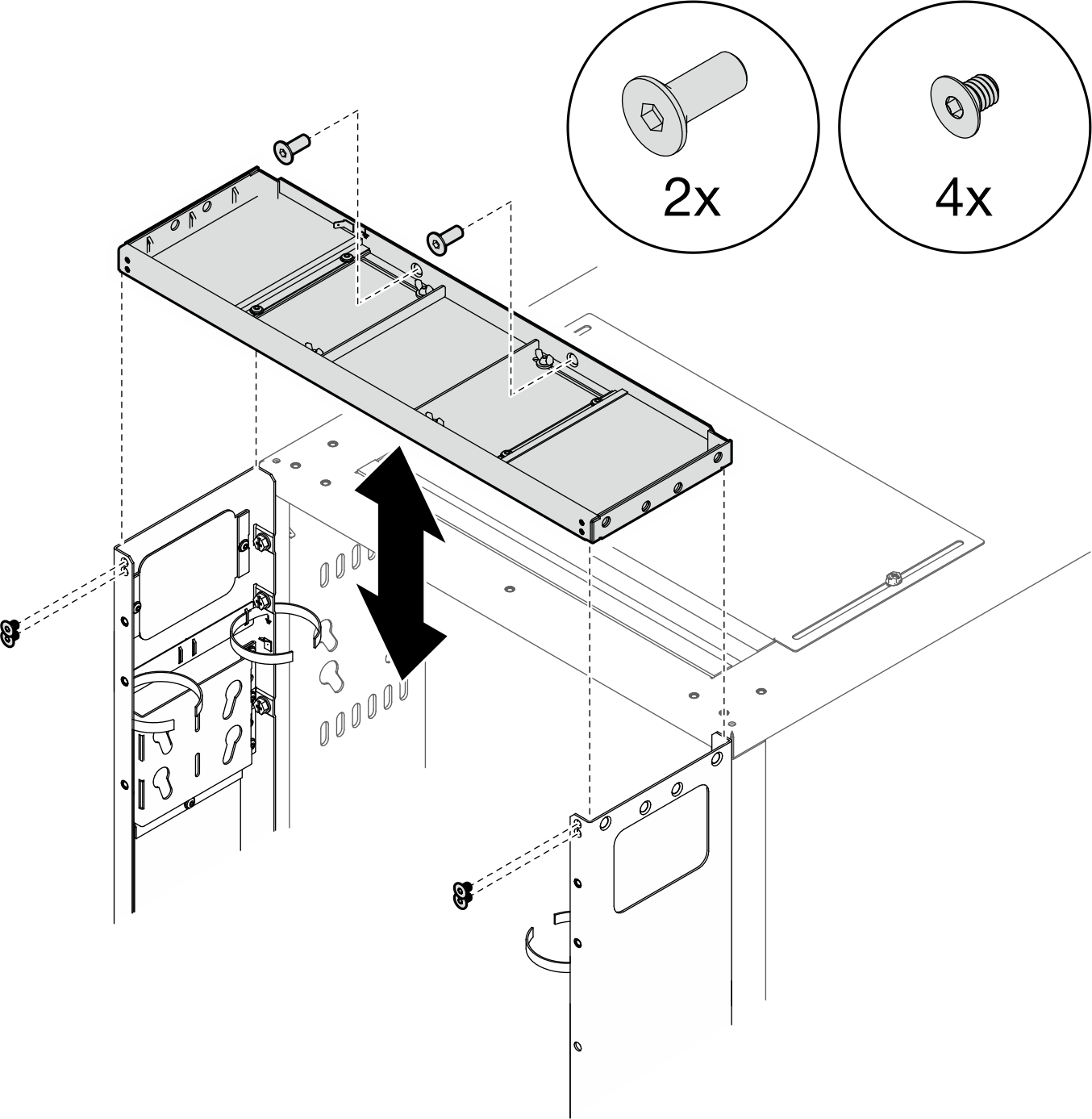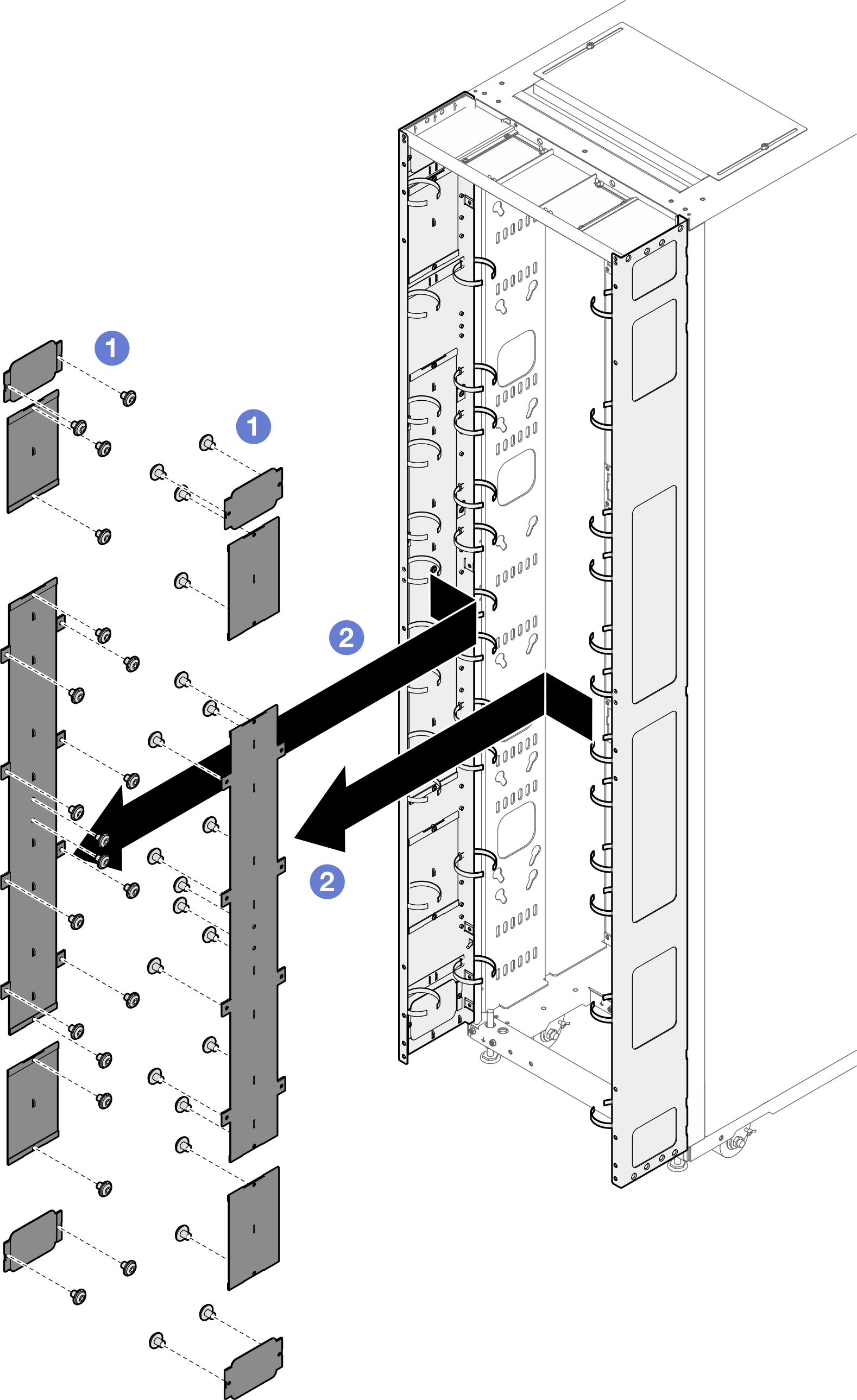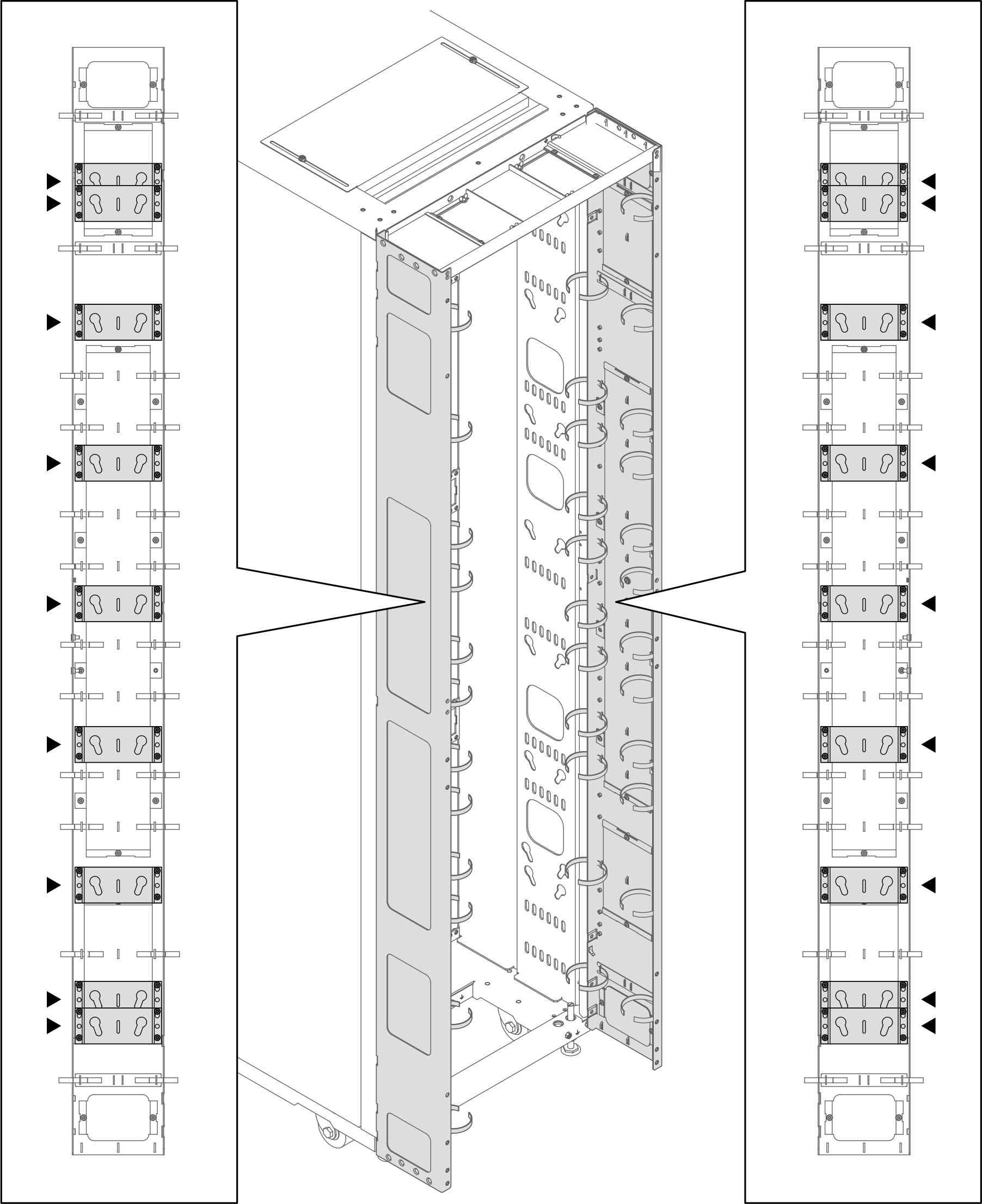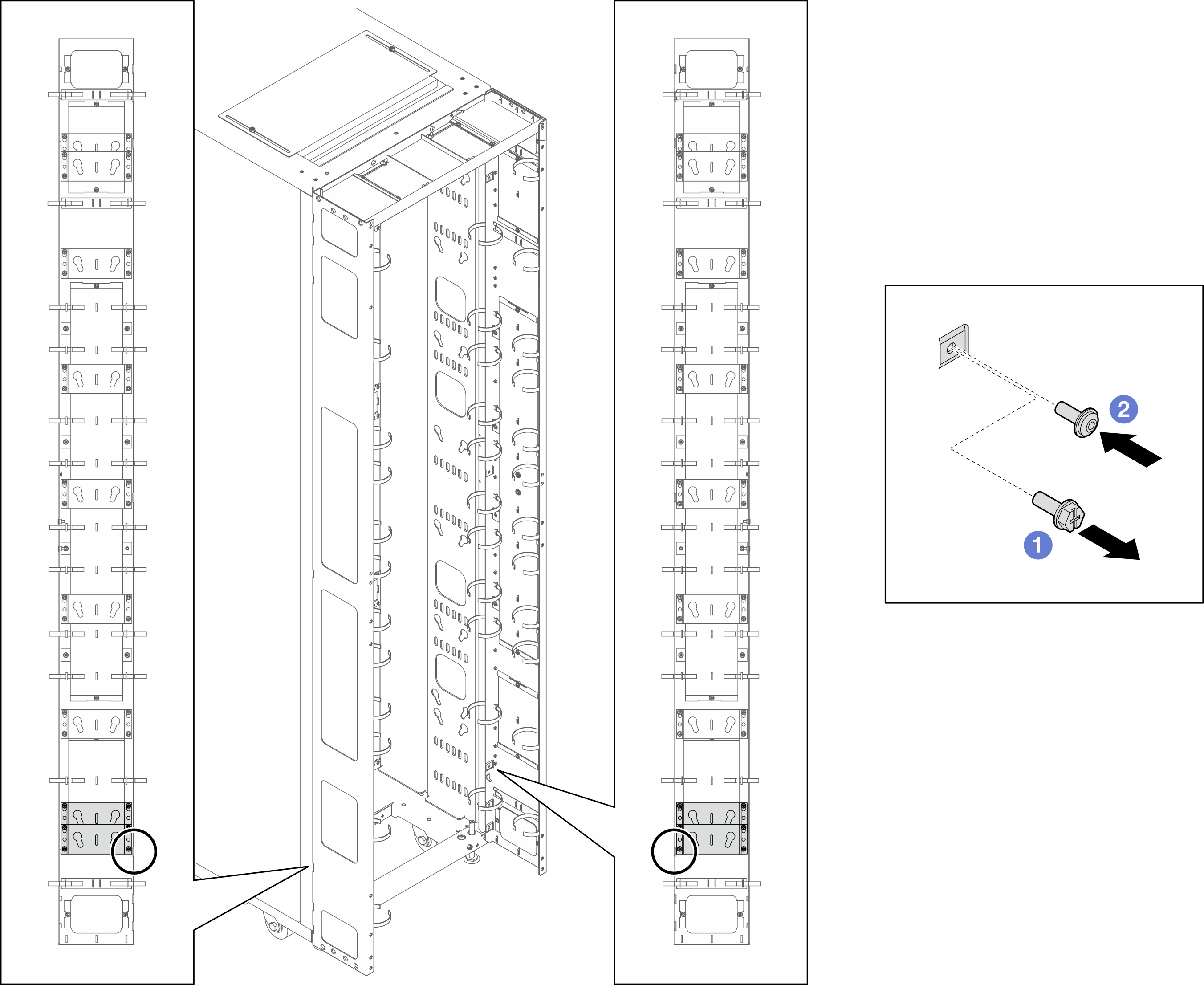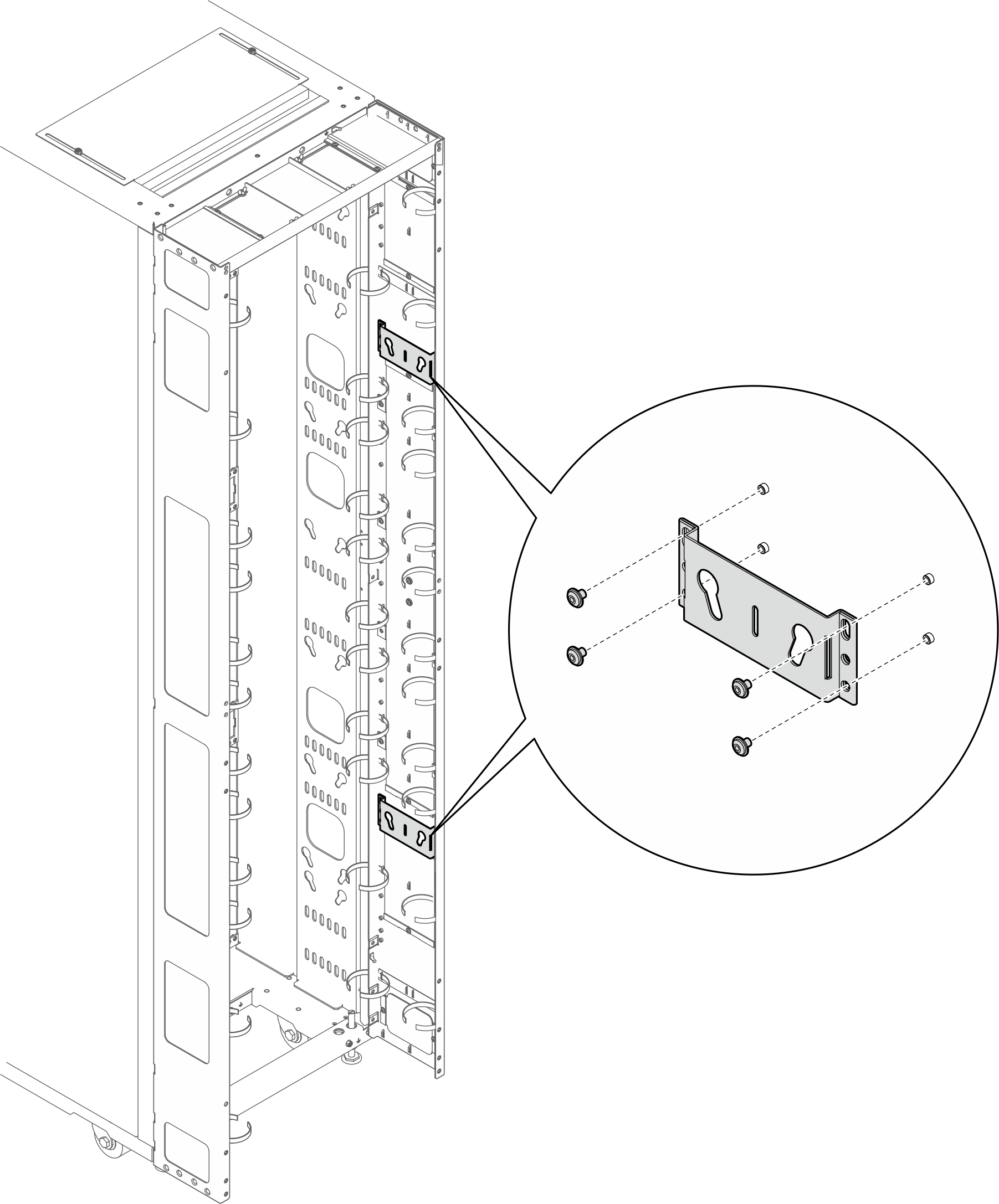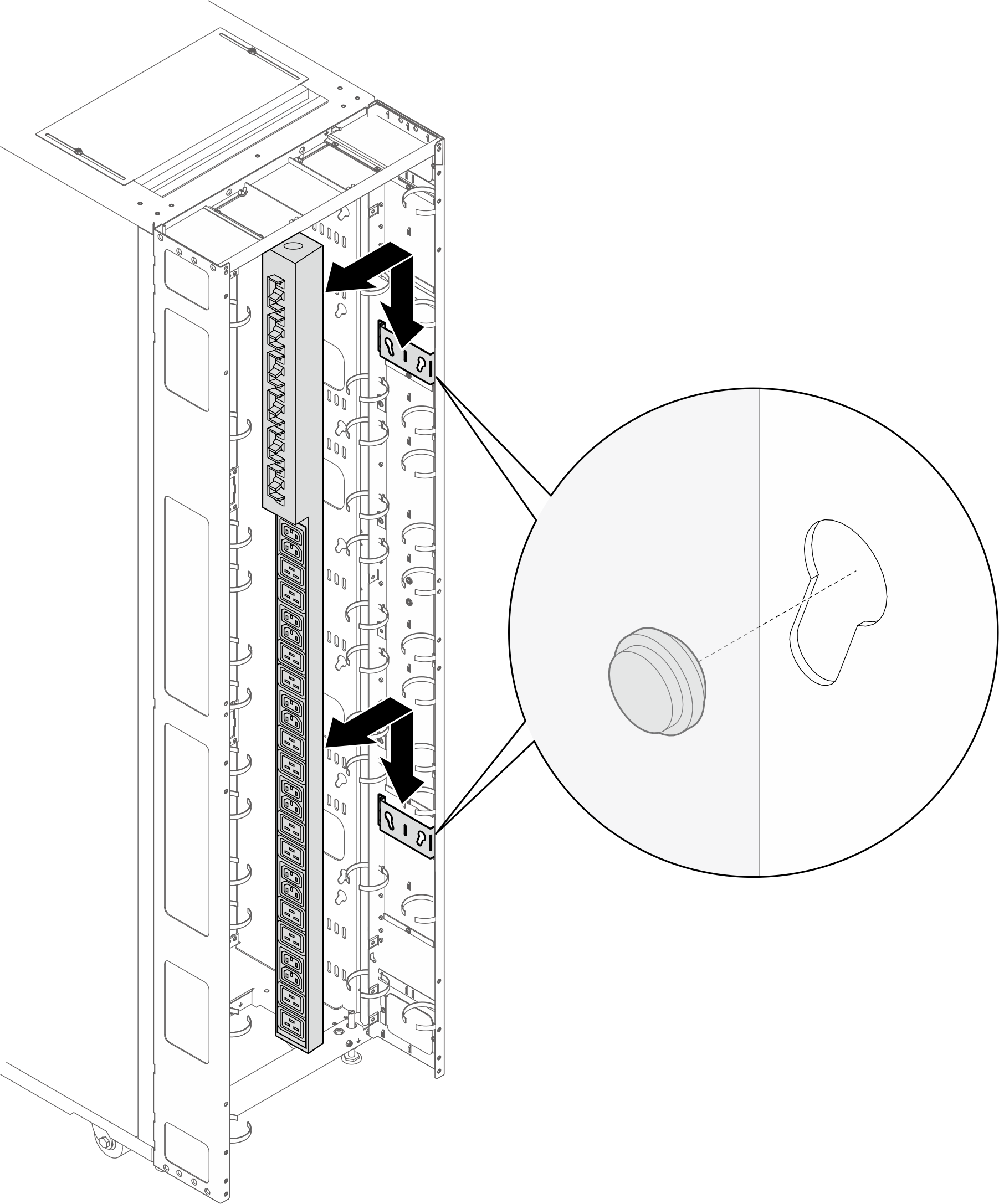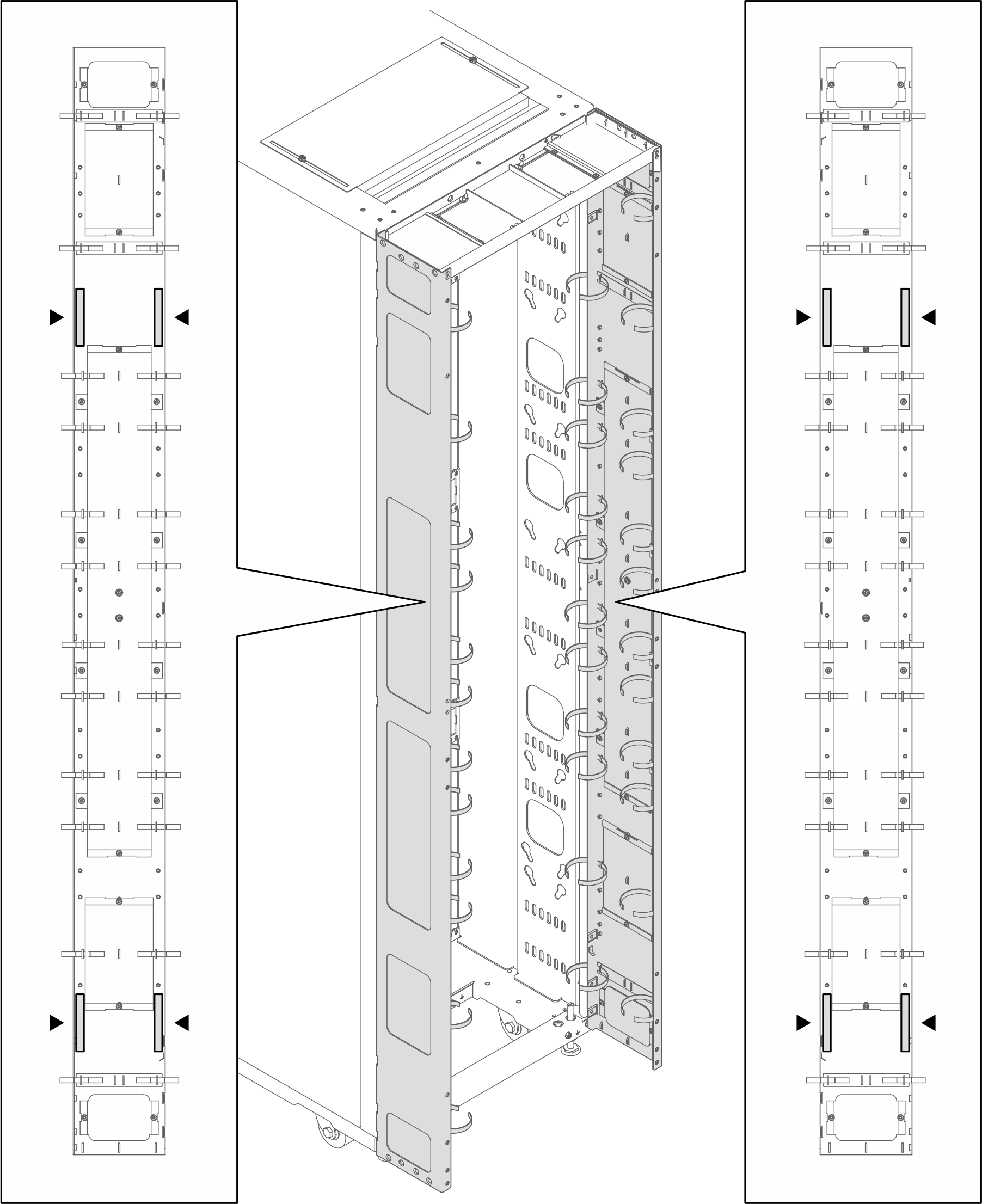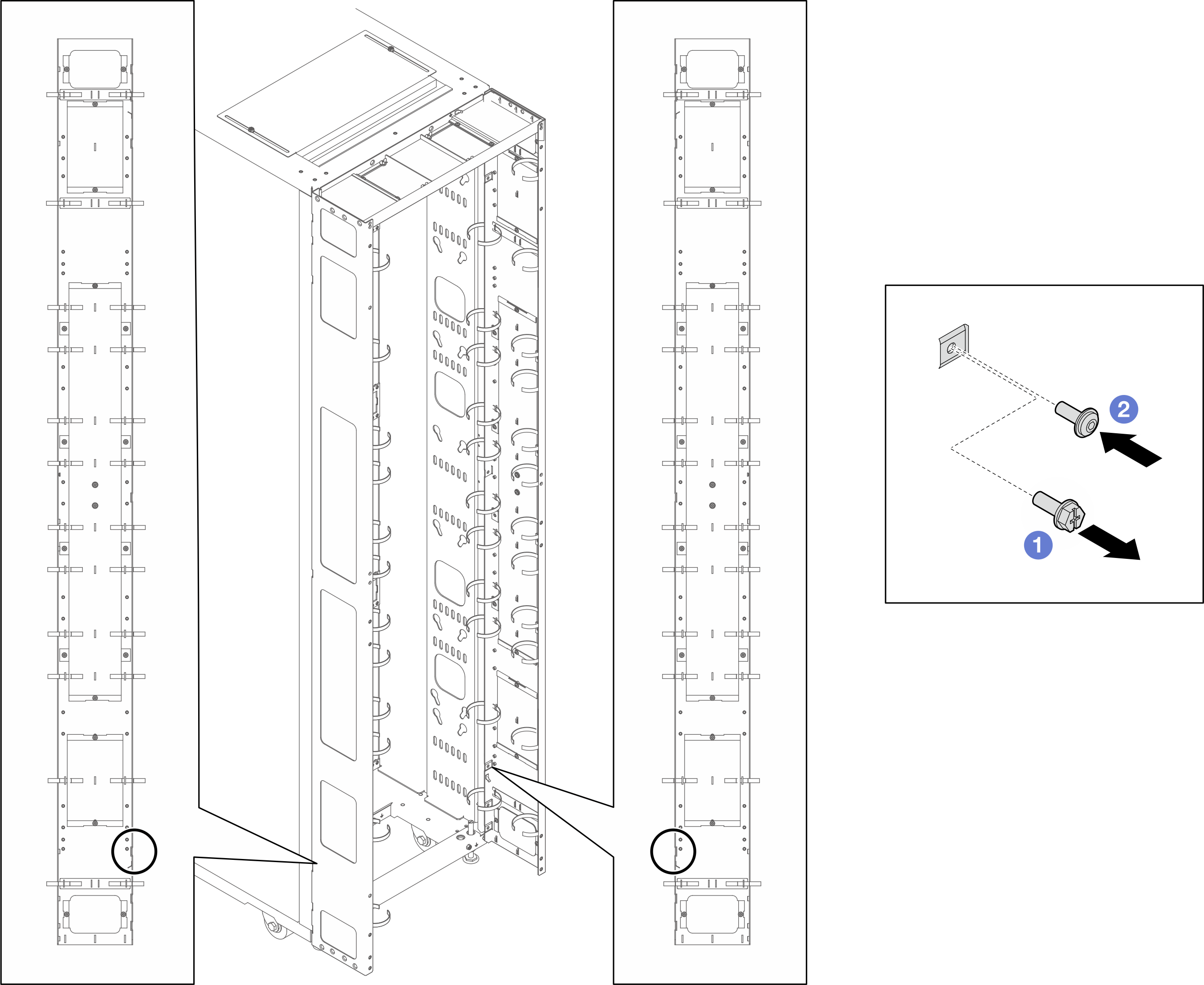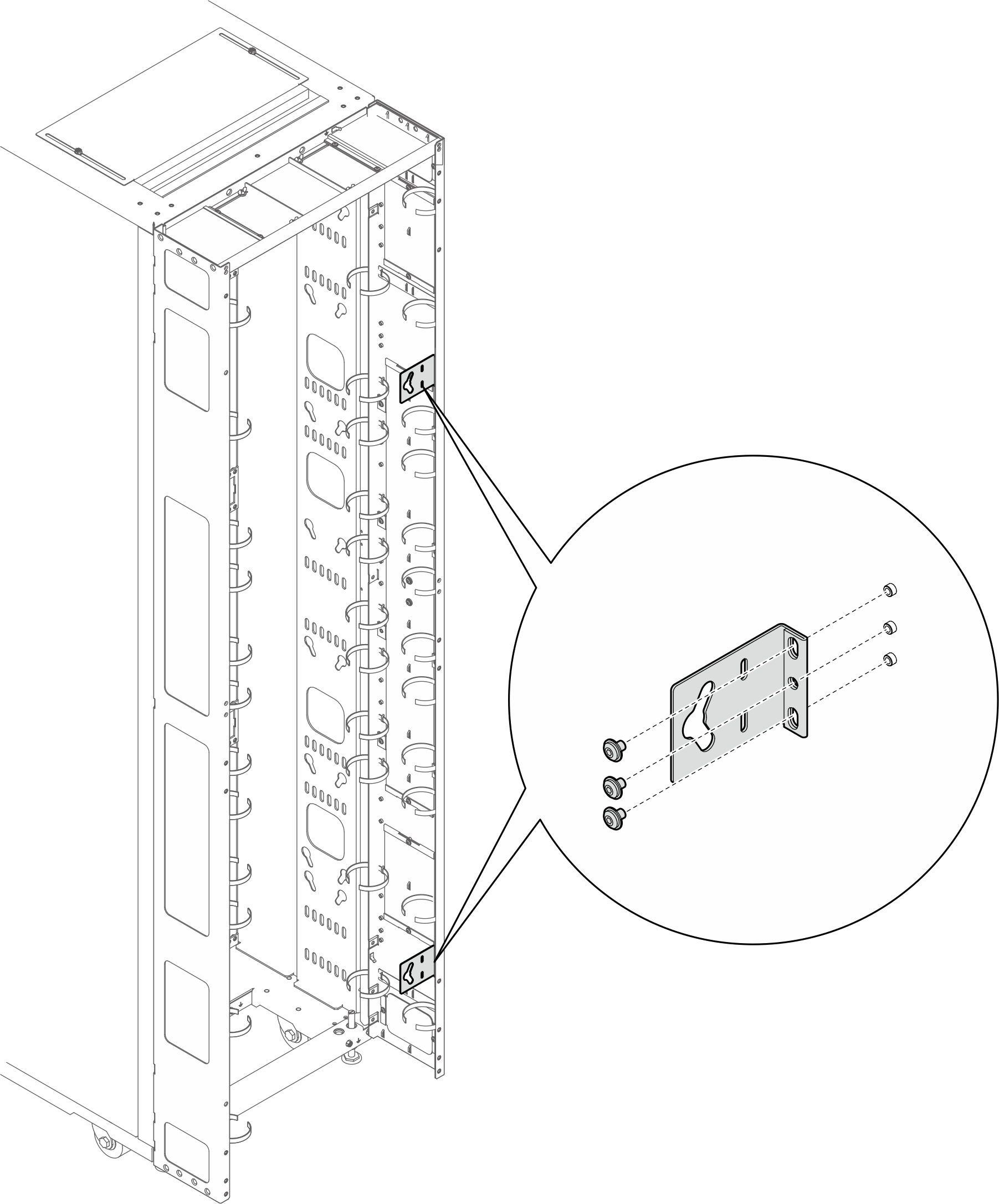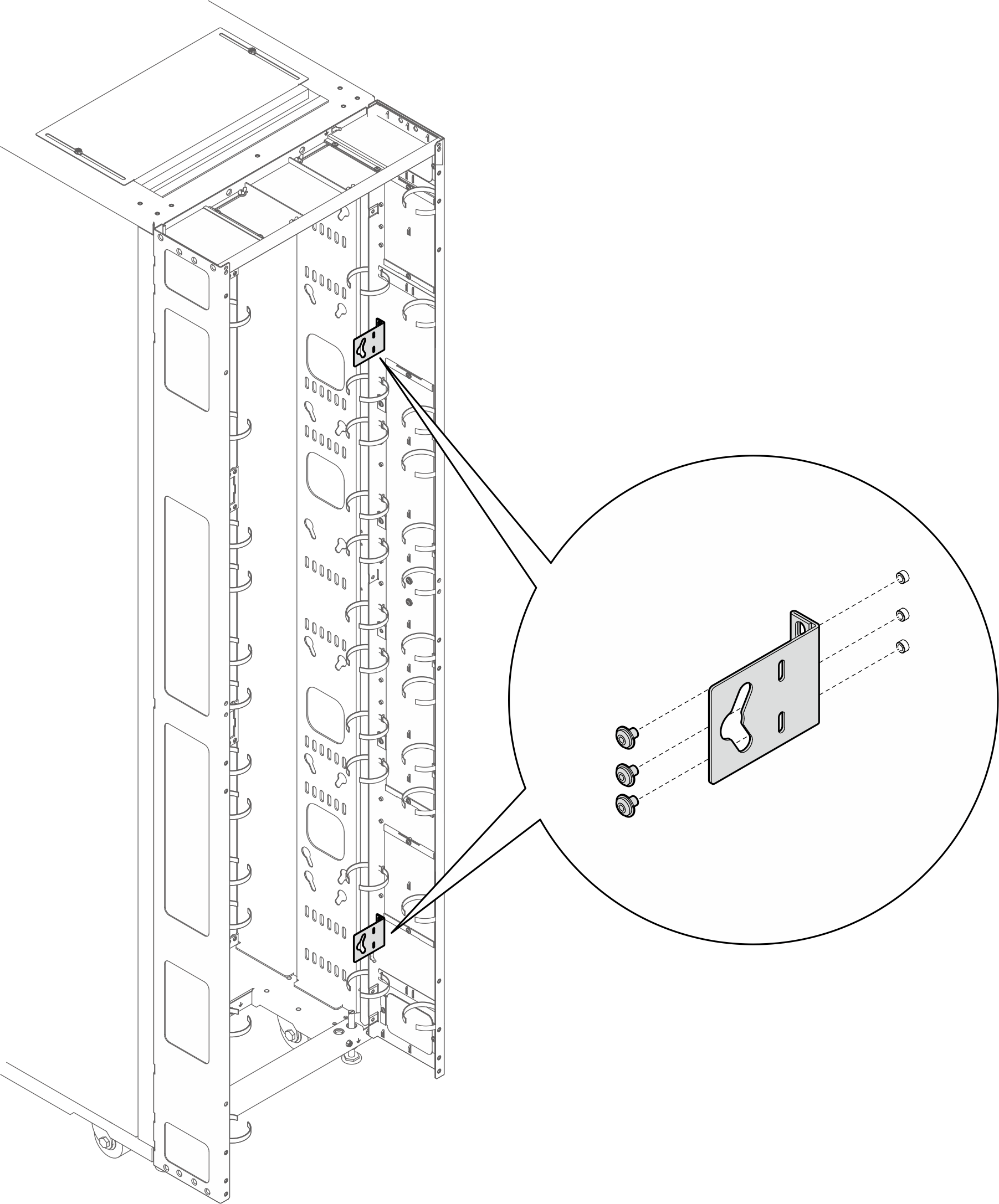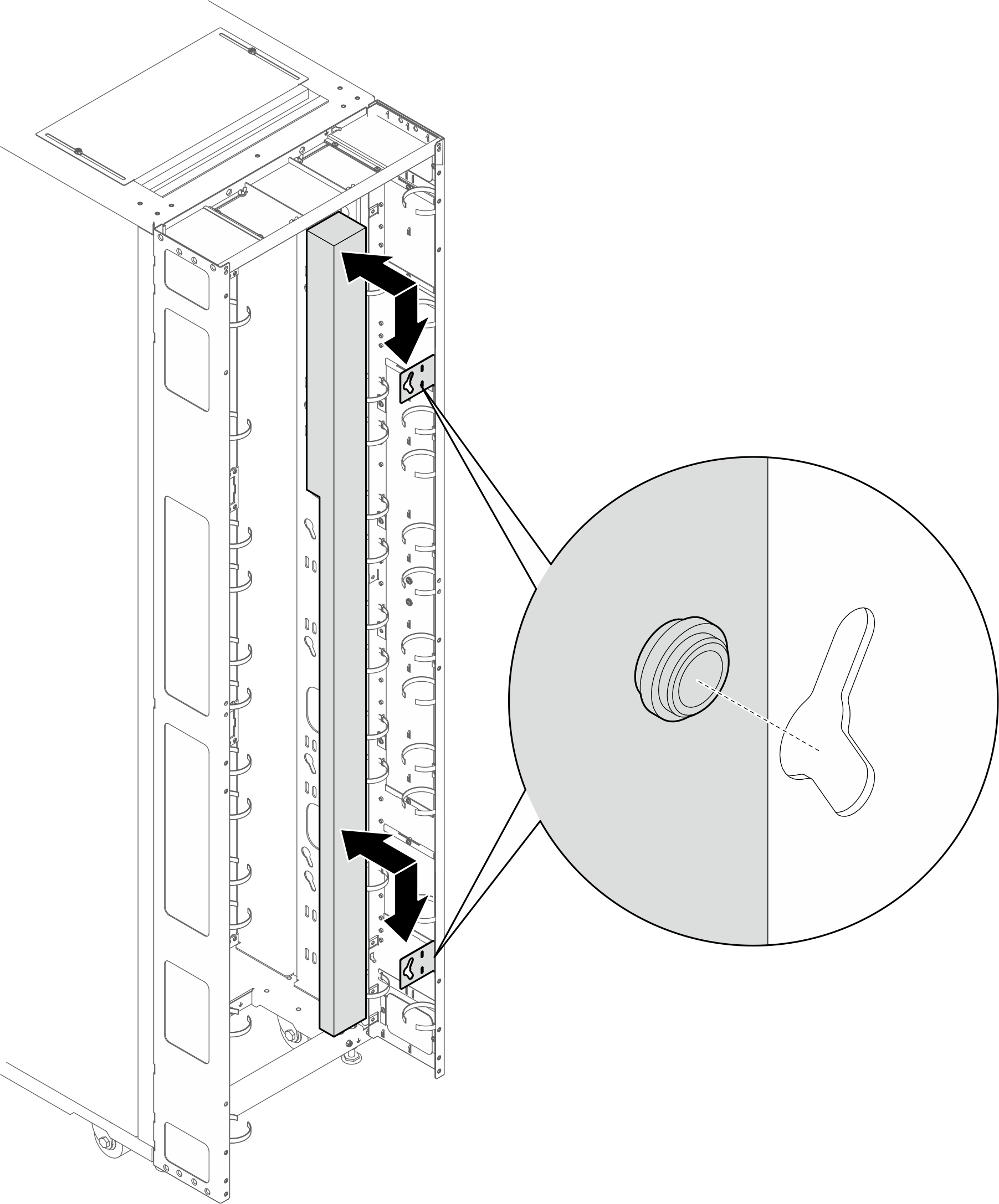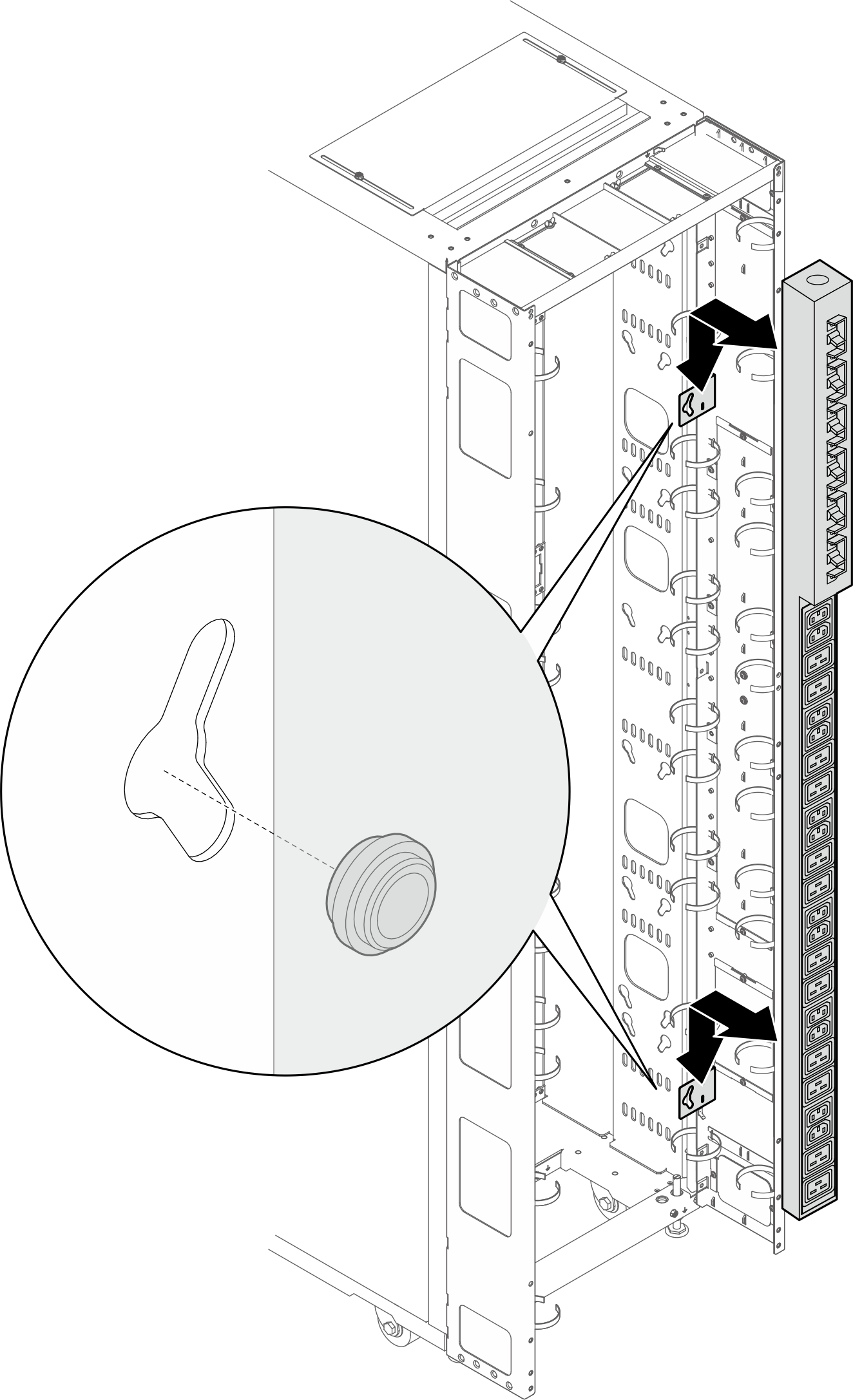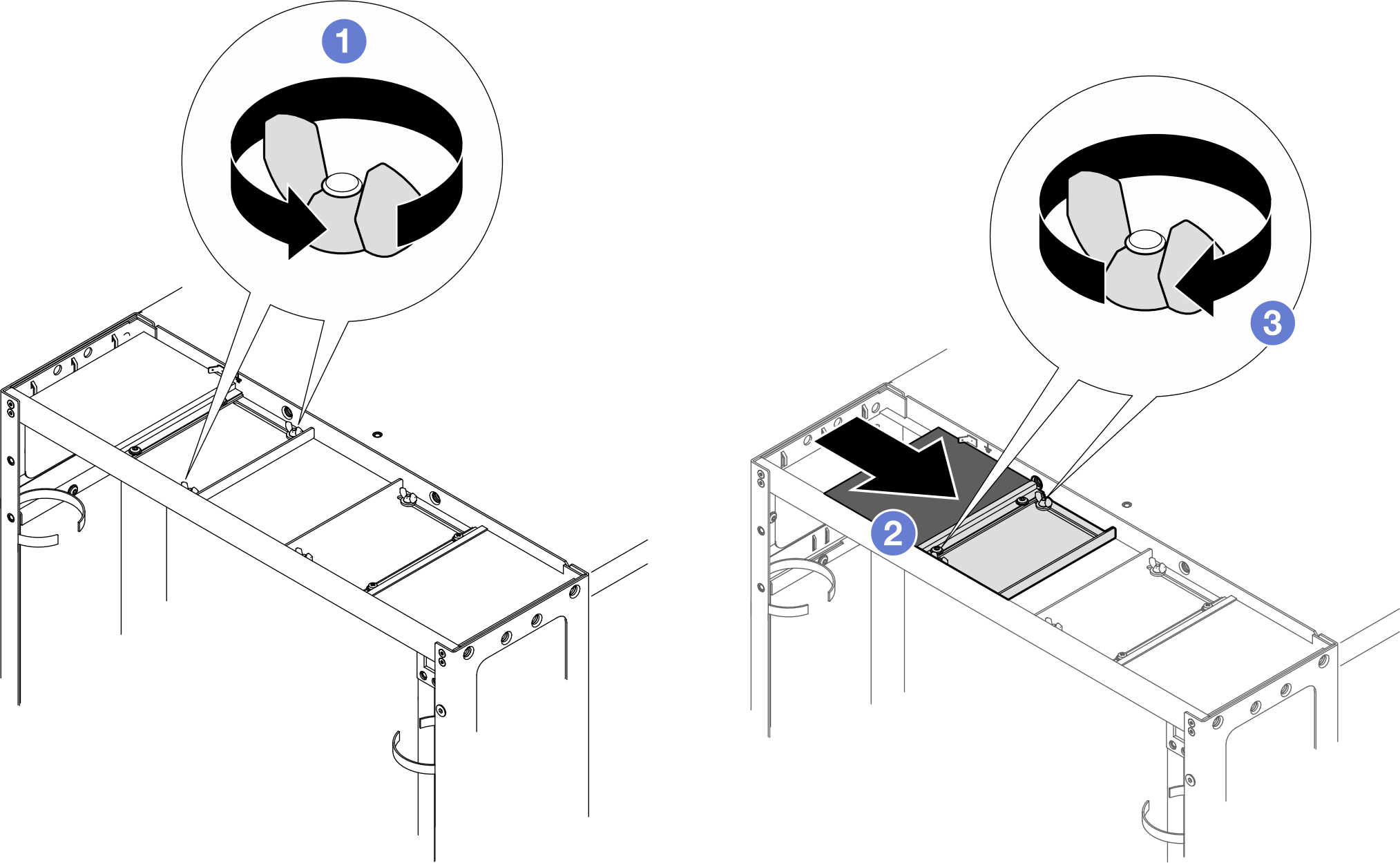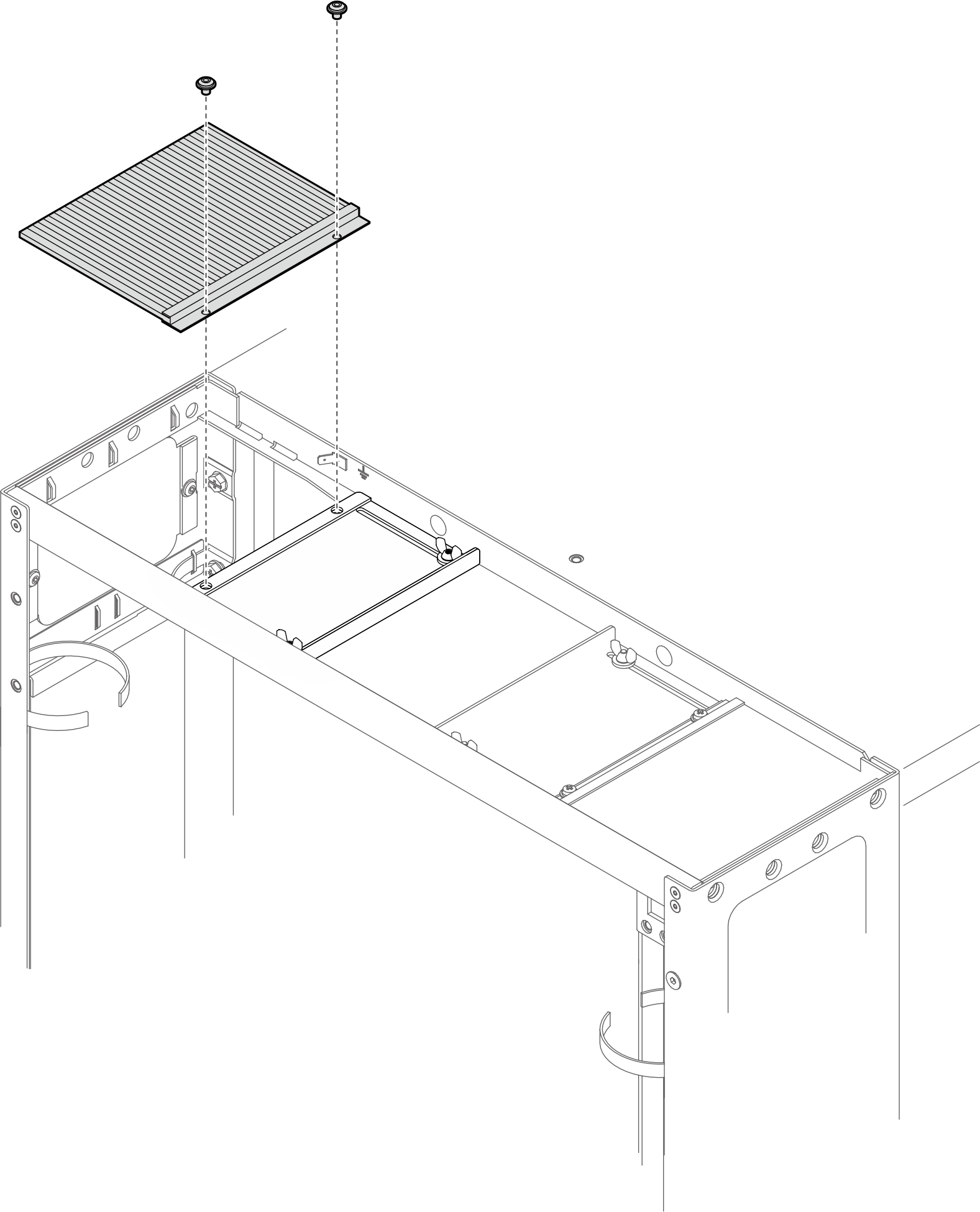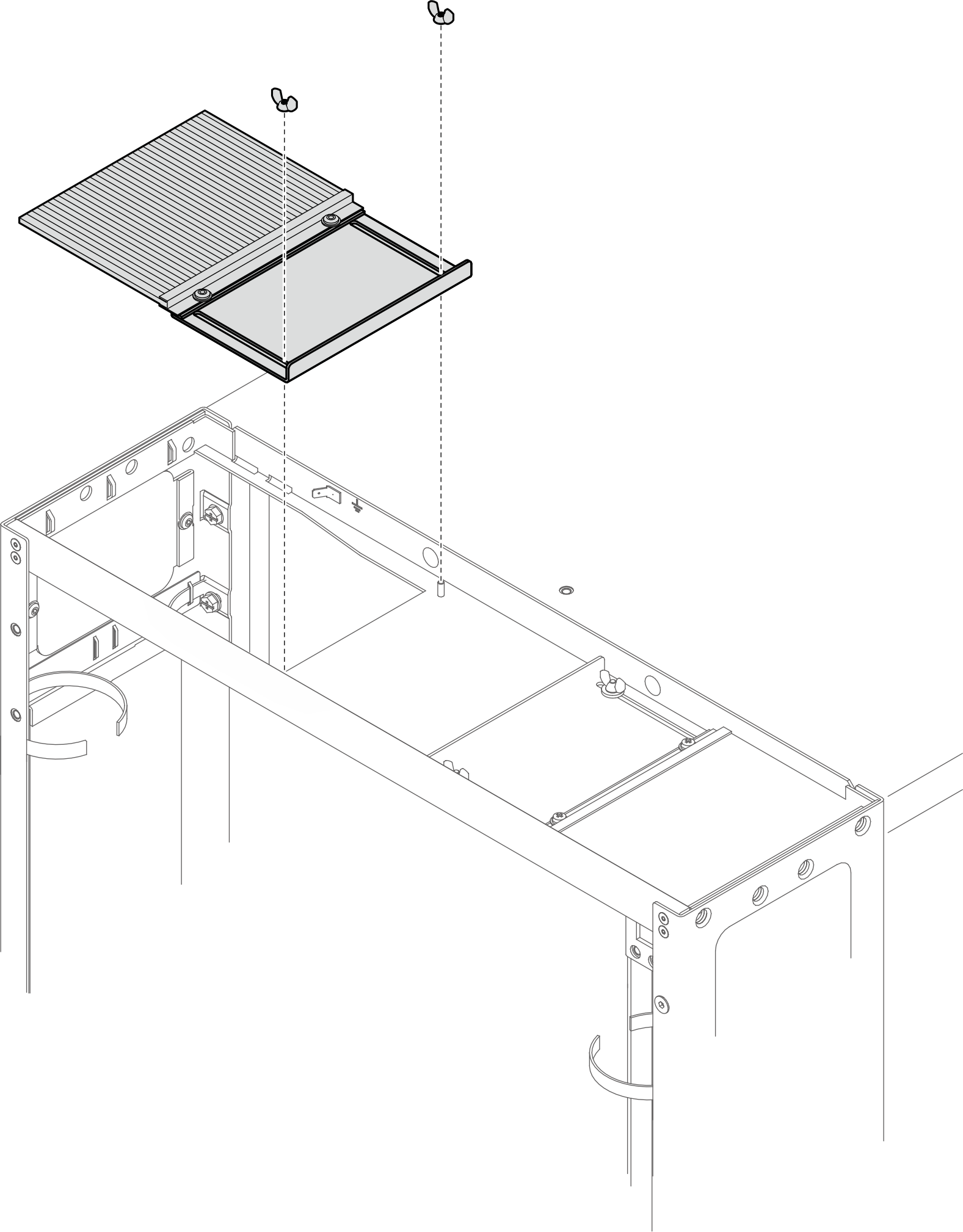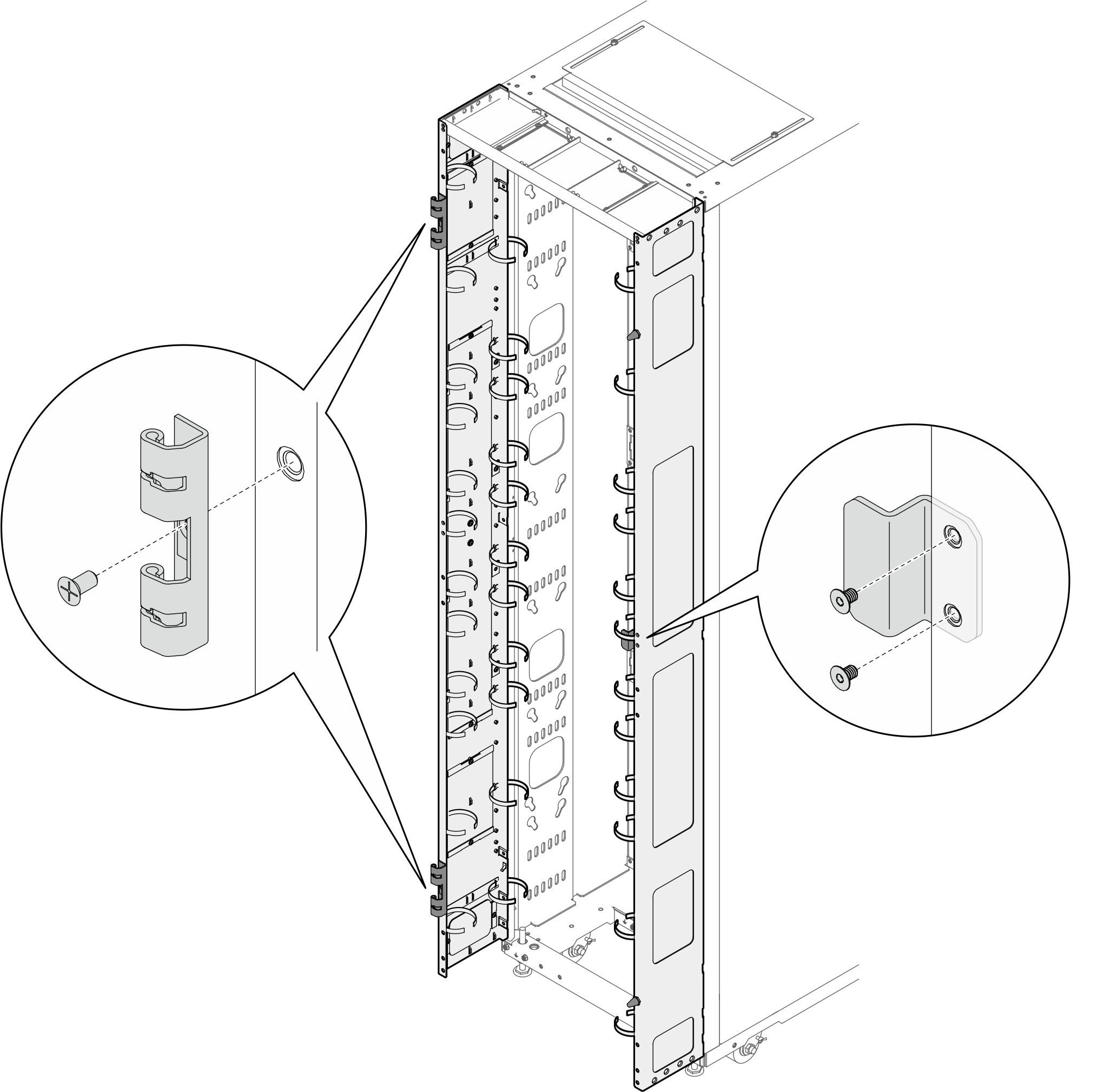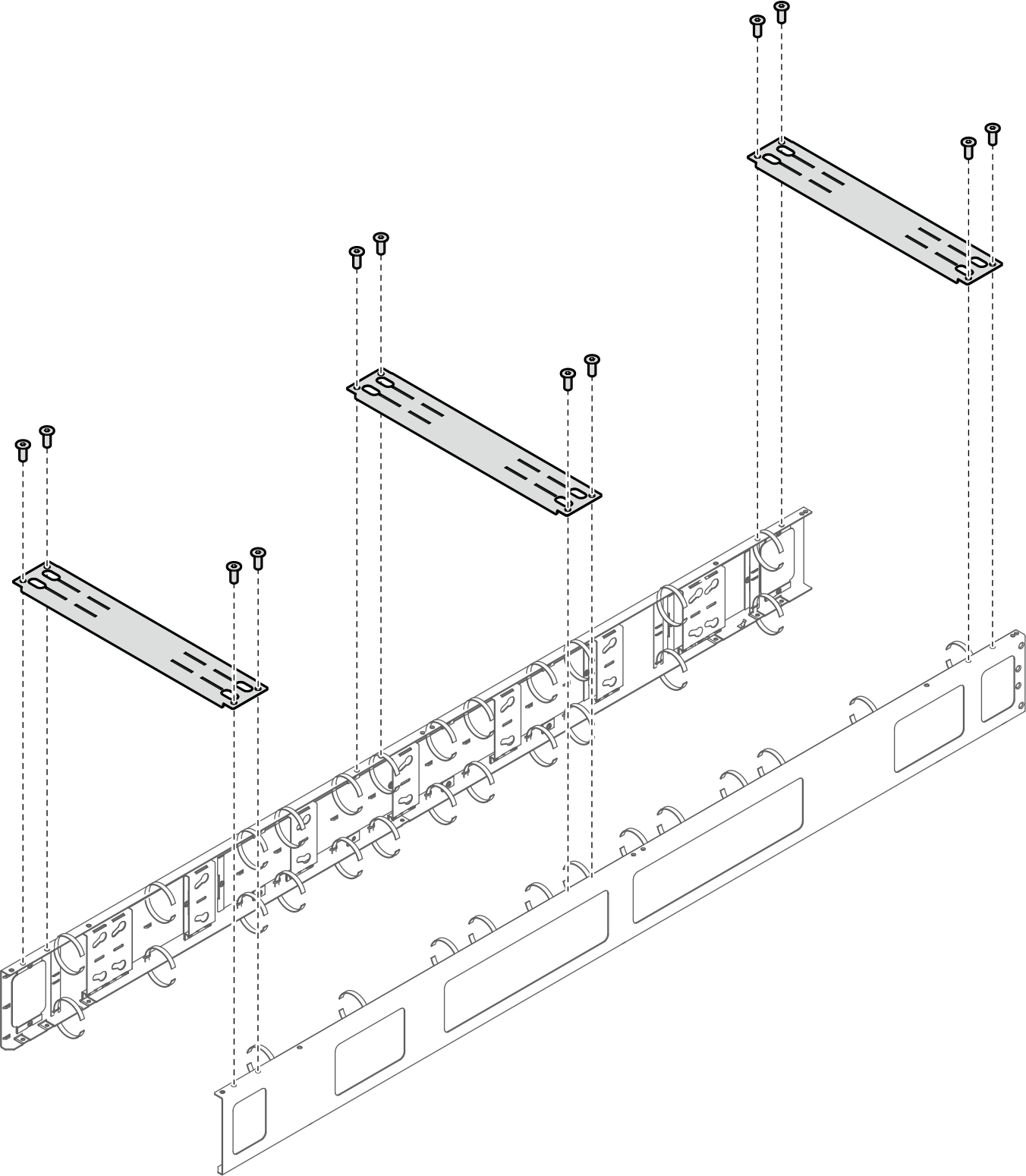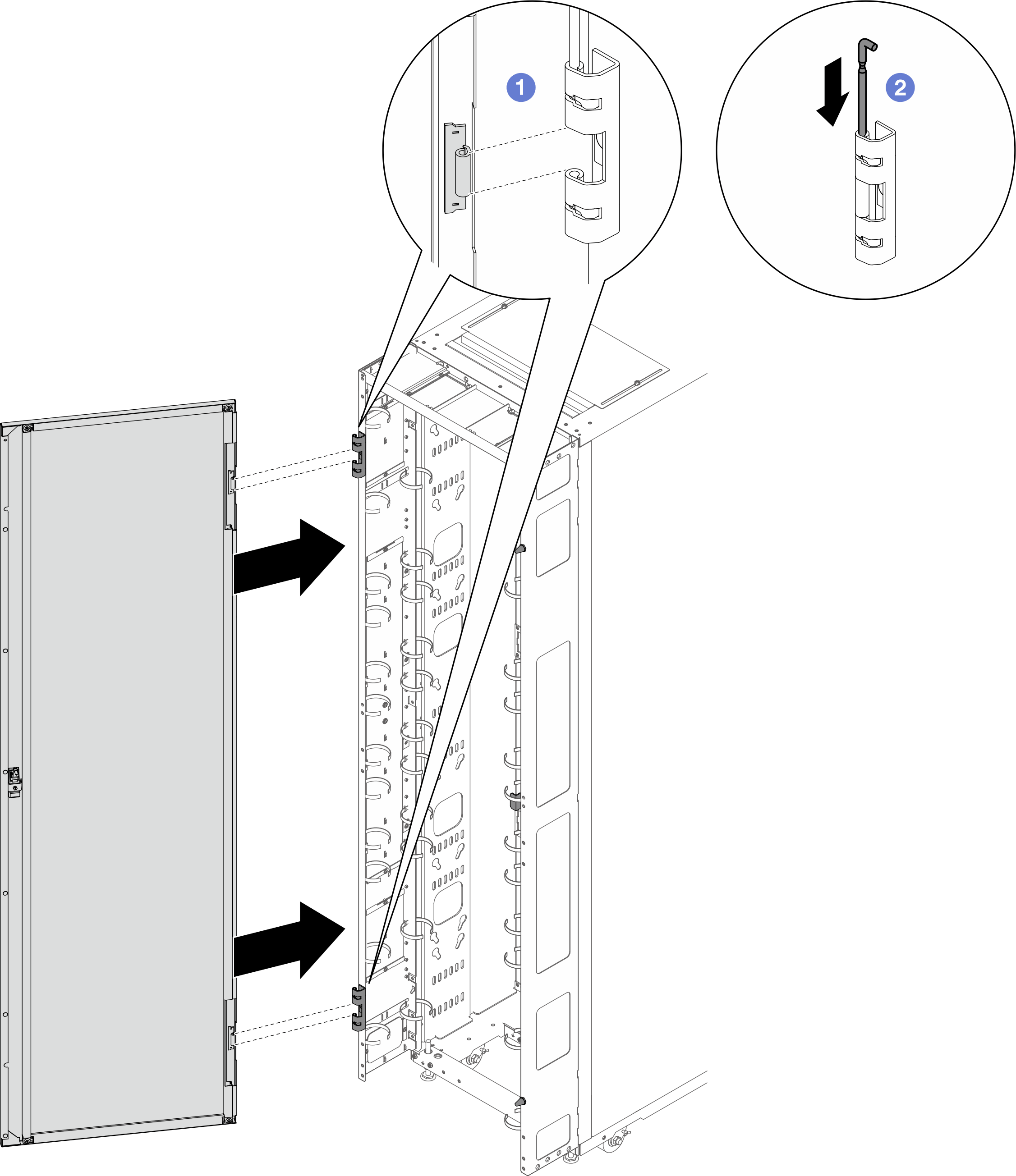48U Advanced Rack Extension Kit 설치
이 항목에서 48U Advanced Rack Extension Kit 설치 방법을 알아보십시오.
주
각 랙 확장 키트 유닛에는 랙의 각 측면에 0U PDU 최대 2개, 또는 0U PDU 1개와 매니폴드 1개를 위한 추가 용량이 제공됩니다.
랙 캐비넷마다 랙 확장 키트 유닛을 최대 2개 지원합니다(앞면 1개 및 뒷면 1개).
인접한 캐비넷 중 하나만 확장하여 설치할 예정이면서 베잉 키트를 설치할 계획이 있는 경우에는 먼저 베잉 키트를 설치해야 합니다(베잉 키트 설치 참조). 그런 다음 이 절차를 준비하기 위해 랙 확장 키트로 설치할 캐비넷의 상부 및 하부에서 나사 2개를 제거하고 2(으)로 이동합니다.
그림 1. 확장 설치 준비를 위해 나사 제거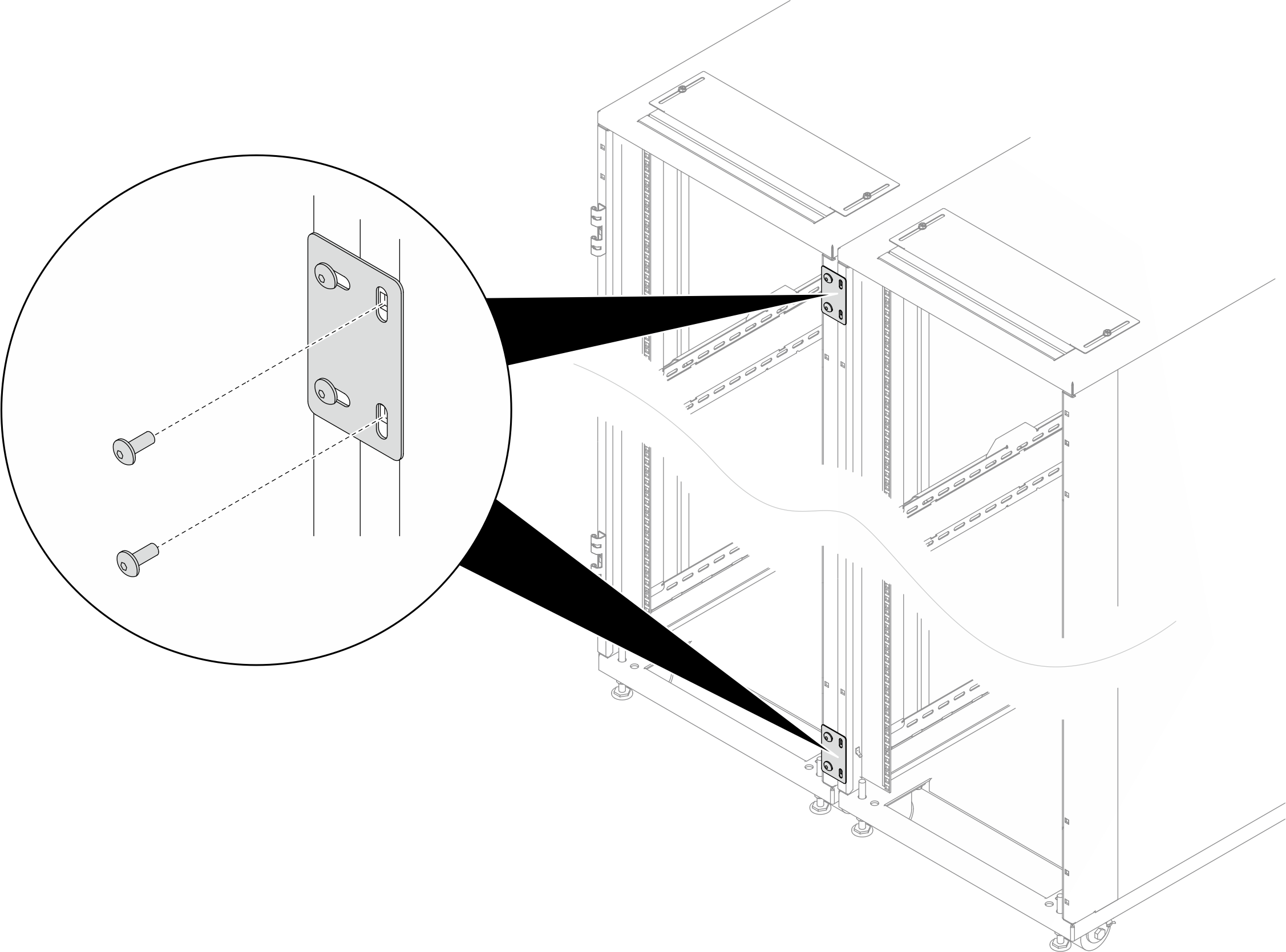
- 필수 도구
- 포장을 열기 위한 플라스틱 칼날/가위가 있는 도구 1개
- 확장 패널을 랙 측면에 맞추기 위한 고무 망치 1개
- M6 나사를 조이기 위한 3번 Phillips 비트가 있는 드라이버 1개(다음 글머리 기호에 9)
- M6 나사를 조이기 위해 육각 비트를 10mm 고정하는 너트 드라이버 1개(다음 글머리 기호에 9)
- M4 나사를 조이기 위한 2.5mm 육각 비트 소켓 1개(다음 글머리 기호에 13)
- M5 나사를 조이기 위한 3mm 육각 비트 소켓 1개(PDU/매니폴드 브래킷, 확장 패널의 열림 덮개)
- M6 나사를 조이기 위한 4mm 육각 비트 소켓 1개(다음 글머리 기호에 3 및 12)
- 확장 키트에는 다음 구성 요소가 들어 있는 기타 품목 가방이 함께 제공됩니다.그림 2. 부품
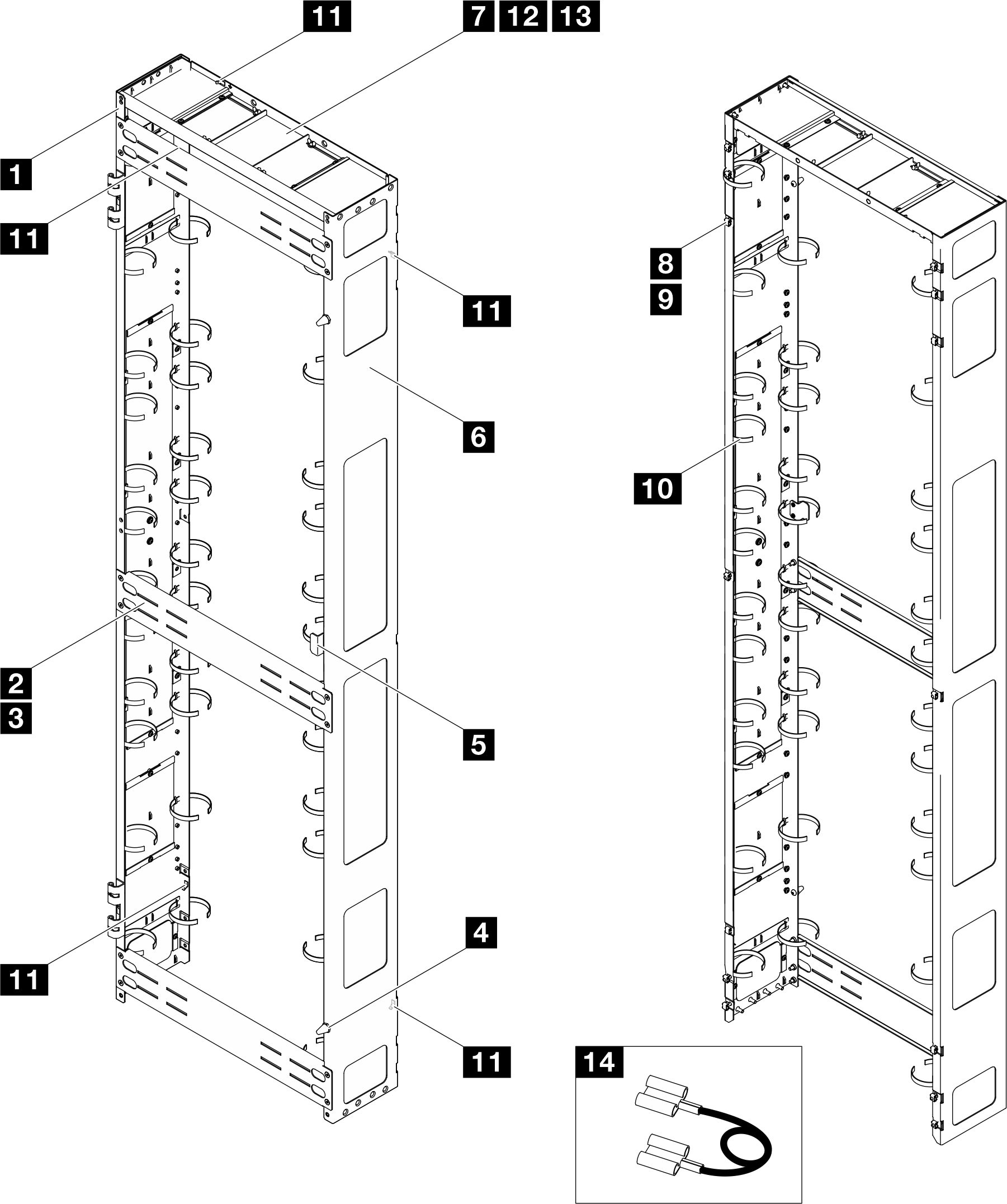
번호 설명 수량 번호 설명 수량 1 왼쪽 확장 패널 1 8 M6 케이지 너트 14 2 지지 브래킷 3 9 M6 x 16mm 육각 머리 플랜지 나사 14 3 M6 x 12mm 접시 머리 나사 12 10 케이블 스트랩 모듈 123 2 4 도어스토퍼 2 11 접지판 5 5 도어 래치 1 12 M6 x 16mm 접시 머리 나사 2 6 오른쪽 확장 패널 1 13 M4 x 6mm 일자형 소켓 캡 나사 4 7 확장 윗면 덮개 1 14 접지선 4 3 - 1 케이블 스트랩은 탈착 가능하며, 필요한 경우 확장 패널에서 스트랩을 제거하십시오.
- 2 케이블 스트랩은 2개 이상의 스트랩을 함께 연결하여 연장 가능합니다.
- 3 배송하기 전에 케이블 스트랩을 사용하여 PDU와 매니폴드를 고정하십시오.
- 4 접지선의 한쪽 끝을 확장 패널의 접지판에 연결하고 다른 쪽 끝을 랙의 가장 가까운 접지판에 연결합니다.
그림 3. 육각 앨런 렌치
번호 설명 1 육각 앨런 렌치, 4mm 2 육각 앨런 렌치, 3mm 3 육각 앨런 렌치, 2.5mm
절차
피드백 보내기
